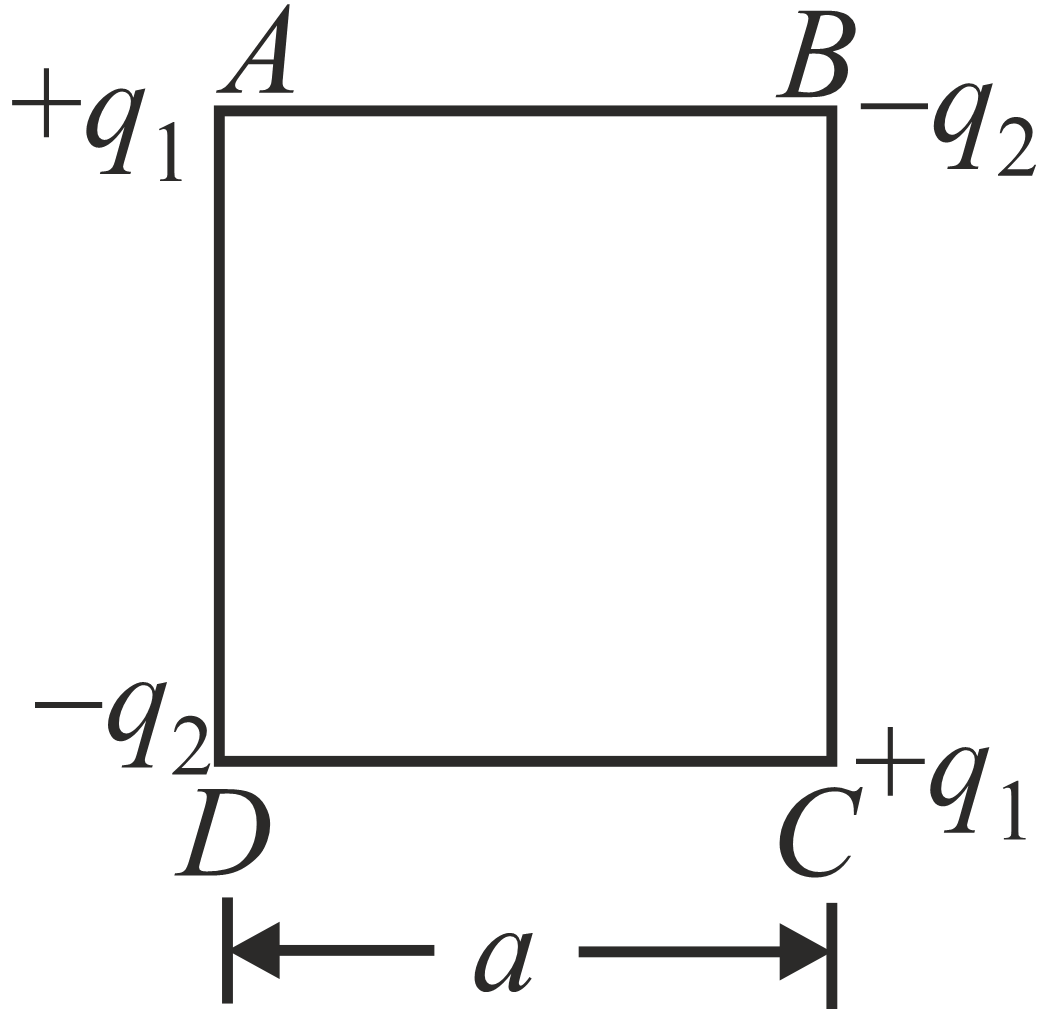Q.
Charges are placed at the corners of a square of side $a$ , as shown in the following figure. The charged particle placed at $A$ is in equilibrium. The ratio $\frac{q_{1}}{q_{2}}$ is

NTA AbhyasNTA Abhyas 2022
Solution:
